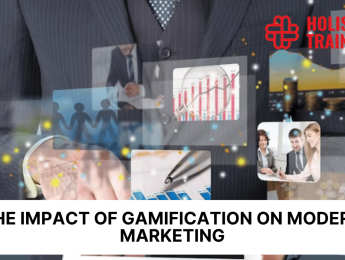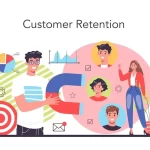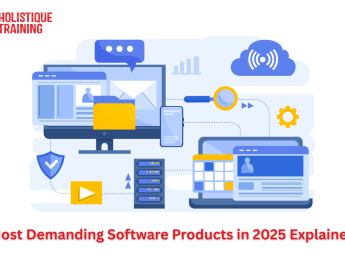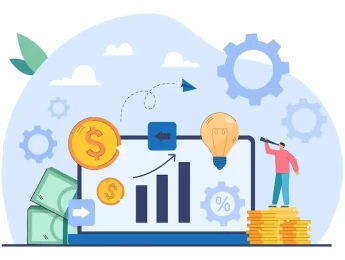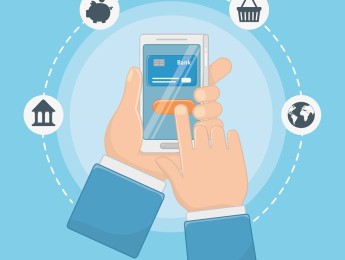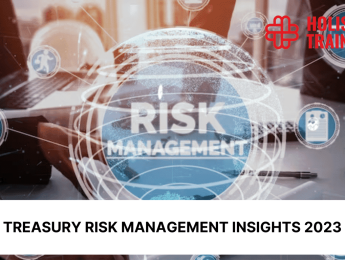- Table of Contents
- Introduction
- What Is Gamification Marketing?
- How Does Gamification Marketing Compare to Other Marketing Strategies?
- The Step-by-step Process of Gamification Marketing
- 1. Define Objectives and Audience
- 2. Select Game Mechanics
- 3. Design the Game
- 4. Integrate Gamification
- 5. Promote and Engage
- 6. Monitor and Optimise
- Advantages of Gamification Marketing
- Increased Engagement
- Enhanced Learning and Retention
- Better Data Collection
- Stronger Brand Loyalty
- Social Sharing and Word-of-Mouth
- The Cons of Gamification Marketing
- Implementation Complexity
- Sustainability
- Budget Considerations
- User Experience Challenges
- Real-life Examples of Successful Gamification Marketing Campaigns
- 1. Nike+ Training Club
- 2. Starbucks Rewards
- 3. McDonald's Monopoly
- 4. Duolingo
- Future Trends in Gamification Marketing
- 1. Augmented Reality (AR) Integration
- 2. Personalisation and Customisation
- 3. Blockchain-based Gamification
- 4. Gamification for Social Impact
- 5. Gamification in Education and Training
- In Conclusion
Introduction
Amidst the ever-evolving marketing landscape, businesses are constantly on the lookout for innovative strategies that can captivate their audience and forge indelible connections. Amidst these strategies, a dynamic force has emerged—Gamification Marketing. This approach infuses the thrill of gaming into marketing strategies, creating immersive experiences that not only attract consumers but also cultivate brand loyalty and enrich customer interaction. In this article, we delve into the realm of Gamification Marketing, comparing it to other marketing approaches, outlining its implementation process, exploring its benefits and challenges, and showcasing real-life examples of its triumphant application.
What Is Gamification Marketing?
At its core, Gamification Marketing is the art of integrating game elements and mechanics into marketing strategies to boost customer engagement, interaction, and loyalty. It capitalises on the inherent human desire for competition, achievement, and reward, transforming mundane interactions into thrilling experiences. Through elements like challenges, rewards, competition, and progression, brands can tap into the psychological triggers that drive behaviour and create a sense of fun and excitement around their products or services.
How Does Gamification Marketing Compare to Other Marketing Strategies?
While traditional marketing strategies focus on one-way communication, Gamification Marketing operates on a two-way street where customers actively participate in the brand experience. Unlike conventional advertising, which often bombards users with messages, Gamification Marketing draws users in, making them feel like an integral part of the campaign. This participatory approach not only builds stronger connections between brands and consumers but also encourages organic sharing and word-of-mouth promotion.
In comparison to content marketing, where the emphasis is on delivering valuable information, Gamification Marketing leverages the emotional investment players have in the game to embed promotional messages seamlessly. This strategy enables brands to bypass ad fatigue and scepticism, resulting in a more receptive audience.
Table 1: A comparison of marketing strategies
Aspect | Traditional Marketing | Content Marketing | Gamification Marketing |
Communication | One-way communication | Two-way communication | Interactive and participatory experiences |
Engagement | Passive audience | Engagement through valuable content | Active engagement through game elements |
Interaction | Limited interaction | Interaction through content | Participation and involvement in the brand experience |
Effectiveness | Message delivery | Information dissemination | Engagement, interaction, and emotional connection |
The Step-by-step Process of Gamification Marketing
Implementing Gamification Marketing successfully requires a meticulous approach that encompasses various stages. Let's delve deeper into the step-by-step process to understand how businesses can create engaging gamified experiences for their audience:
1. Define Objectives and Audience
The first crucial step in Gamification Marketing is defining clear objectives for your campaign. Ask yourself: What do you want to achieve? Are you aiming to increase brand awareness, boost sales, or enhance customer loyalty? Each objective requires a tailored approach. Simultaneously, understanding your target audience is equally vital. Conduct market research to grasp their preferences, behaviours, and interests. This insight becomes the cornerstone upon which your gamified campaign is built, ensuring it resonates with your audience effectively.
2. Select Game Mechanics
Once objectives and audience are defined, the next step is choosing appropriate game mechanics. Game mechanics are the building blocks of your gamified experience. Elements such as points, badges, leaderboards, challenges, and rewards are fundamental. However, the key lies in aligning these mechanics with your objectives and the preferences of your audience. For instance, if your goal is to encourage social interaction, leaderboards and social challenges might be essential. Tailoring these mechanisms ensures they are not only engaging but also directly contribute to achieving your marketing goals.
3. Design the Game
Designing the game interface is an art in itself. It should seamlessly blend your brand identity with the gaming experience. The design should be intuitive, visually appealing, and immersive, capturing the essence of the game mechanics. User experience is paramount; the interface should be user-friendly, encouraging players to explore and engage effortlessly. Incorporating captivating visuals, interactive elements, and a compelling narrative enhances the overall experience, making users more inclined to participate and remain engaged.
4. Integrate Gamification
Integrating the game into your marketing channels is a critical step. Whether it's your website, mobile app, or social media platforms, the gamified experience should be easily accessible. Seamlessly embedding the game within these channels ensures a wider reach and higher participation rates. Additionally, effective integration involves ensuring the game aligns with your overall branding and marketing messages. Consistency in branding reinforces your identity, making the gamified experience an integral part of your overall marketing strategy.
5. Promote and Engage
Promotion is key to driving participation. Utilise various marketing channels such as social media, email marketing, and influencer collaborations to create buzz around your gamified campaign. Teasers, sneak peeks, and behind-the-scenes content can generate excitement and anticipation. Engage with your audience actively. Respond to their inquiries, provide support, and encourage user-generated content related to the game. Engagement fosters a sense of community around your brand, making users feel connected and valued, further enhancing their participation in the gamified experience.
6. Monitor and Optimise
Launching the gamified campaign is not the end; it's the beginning of a continuous feedback loop. Monitoring the game's performance is crucial. Metrics such as engagement rates, time spent, completion rates, and user feedback provide valuable insights. Analyse this data meticulously to understand what works and what doesn’t. Identify patterns and trends, and use this information to make data-driven decisions. Regular updates and optimisations are essential to keep the game fresh and engaging. Introduce new challenges, rewards, or levels to maintain user interest and prevent monotony. Additionally, listening to user feedback and addressing concerns promptly demonstrates your commitment to enhancing the user experience.
By meticulously following these steps, businesses can create gamified marketing campaigns that not only captivate their audience but also achieve their marketing objectives effectively. The process is dynamic, requiring adaptability and creativity to keep pace with evolving audience preferences and market trends. Successful Gamification Marketing is not just a one-time event but an ongoing strategy that evolves, engages, and retains customers over the long term.
Advantages of Gamification Marketing
According to LXA, Gamification has found its place in the strategies of a significant portion, about 70%, of the world's Global 2000 companies, and it’s for good reason. Gamification Marketing illuminates a multitude of advantages that can redefine how businesses engage with their audience. Let's delve deeper into these advantages and explore how gamification can reshape the marketing game:
Increased Engagement
In the highly competitive digital landscape, capturing and maintaining the attention of consumers is a challenge. Gamification, with its interactive and rewarding elements, excels in capturing user engagement. By integrating challenges, rewards, and competitions, brands create an environment that entices users to participate actively. The innate human desire for recognition and achievement is harnessed, motivating users to invest time and effort in the gamified experience. When customers willingly engage in a brand's campaign, it establishes a profound connection and a sense of involvement. This active involvement fosters memorable and interactive relationships, far surpassing the fleeting engagement seen in traditional marketing methods.
Enhanced Learning and Retention
Gamification transforms the process of learning about a brand or product into an enjoyable experience. By immersing users in a game where they solve problems, make decisions, and earn rewards, information is internalised effectively. The emotional investment in the game enhances cognitive retention, making the marketing message more memorable and impactful. Users remember details about products, services, or brand values because they are learned in the context of a challenging and rewarding experience. This leads to better-informed customers who are not only satisfied but also become advocates for the brand, spreading positive word-of-mouth.
Better Data Collection
Gamification not only engages users but also provides a treasure trove of valuable insights. As users interact with the game, their behaviour, preferences, and choices generate valuable data. Analysing this data provides businesses with a deeper understanding of consumer behaviour. From the pages users visit to the choices they make within the game, every interaction offers insights. This data-driven approach allows businesses to refine their marketing strategies, optimise product offerings, and tailor communications to specific audience segments. By understanding their customers on a deeper level, businesses can create personalised marketing campaigns, resulting in higher conversion rates and increased customer satisfaction.
Stronger Brand Loyalty
Gamification possesses the unique ability to foster deep brand loyalty. Through challenges, rewards, and a sense of achievement, users form a connection with the brand that goes beyond mere transactions. Successful gamification campaigns create emotional bonds; users feel valued and recognised for their efforts. Positive emotions associated with winning, earning badges, or reaching new levels become linked with the brand itself. This emotional connection leads to increased customer loyalty. Users are not just loyal to the product; they are loyal to the entire brand experience. They are more likely to return, make repeat purchases, and become brand advocates, leading to long-term customer relationships and increased customer lifetime value.
Social Sharing and Word-of-Mouth
Gamification inherently encourages social interaction. As users engage with the game, they often share their progress, achievements, and experiences with their friends and family on social media platforms. This user-generated content serves as a powerful form of free advertising. Recommendations from friends and family are highly trusted, making organic sharing invaluable. Gamified experiences that are designed for social sharing exponentially increase a brand's visibility. Every share and recommendation extends the brand's reach, making it visible to a wider audience. Positive social experiences within the gamified environment translate into positive brand perceptions, influencing potential customers and building credibility.
In summary, the advantages of Gamification Marketing extend far beyond the surface level of engagement. They encompass enhanced learning, valuable data insights, profound brand loyalty, and organic brand advocacy. Utilising these advantages strategically allows businesses to not only capture attention but also to create lasting relationships, ensuring long-term success in the dynamic landscape of modern marketing.
The Cons of Gamification Marketing
While Gamification Marketing offers a plethora of advantages, it is not without its challenges. Understanding the drawbacks is essential to navigate this innovative approach effectively.
Implementation Complexity
Creating a compelling and effective gamified experience demands careful planning, design, and technical execution. Poorly executed games can lead to user frustration and disengagement. Complex game mechanics or confusing user interfaces can result in a negative user experience. Moreover, the integration of gamification into existing marketing platforms or technologies might pose technical challenges. Ensuring seamless integration across various devices and platforms requires expertise in both marketing and technology. Businesses need skilled professionals who can strike a balance between creativity and technical feasibility to implement a gamification strategy successfully.
Sustainability
Maintaining user interest over time is a significant challenge in gamification. Users may lose interest if the game becomes monotonous or fails to evolve. To counter this, gamified experiences need to constantly introduce new challenges, rewards, or incentives. Regular updates are essential to keep the content fresh and engaging. However, this requires continuous effort and creativity. Monitoring user engagement and adapting the game accordingly is an ongoing process. Failing to sustain the initial excitement can lead to a decline in participation and, ultimately, a decrease in the effectiveness of the gamified marketing campaign.
Budget Considerations
Developing a gamified campaign can be resource-intensive, particularly for small and medium-sized businesses. Customising a gamified experience to align with the brand's identity and objectives often involves significant costs. This expenditure includes not only game development but also the integration of gamification elements across various platforms. Additionally, ongoing maintenance, updates, and technical support contribute to the overall budget. For smaller businesses with limited financial resources, investing in such campaigns might be challenging. It requires careful budget allocation and a clear understanding of the return on investment (ROI) to ensure that the resources invested translate into tangible benefits, such as increased customer engagement and higher sales.
User Experience Challenges
Gamification, if not implemented thoughtfully, can lead to user experience challenges. For instance, overly competitive elements might discourage some users, while overly simplistic games might fail to captivate others. Balancing the difficulty level and ensuring that challenges are both achievable and engaging is crucial. Moreover, accessibility and inclusivity are essential factors. The gamified experience should be designed to cater to a diverse audience, including individuals with disabilities. Failing to address these challenges can result in alienating potential participants and negatively impacting the brand’s reputation.
In summary, while Gamification Marketing offers numerous advantages, businesses need to be cognizant of the complexities and challenges involved. Strategic planning, ongoing monitoring, and a commitment to user experience are pivotal to overcoming these cons effectively. By addressing these challenges, businesses can harness the power of gamification while mitigating potential risks, ensuring a positive and engaging experience for both the brand and its customers.
Real-life Examples of Successful Gamification Marketing Campaigns
1. Nike+ Training Club
Nike's fitness app incorporates gamification elements by rewarding users with achievements and badges for completing workouts. This not only motivates users to stay active but also reinforces brand loyalty.
2. Starbucks Rewards
Starbucks' loyalty programme gamifies the coffee-buying experience by offering stars for each purchase. As users accumulate stars, they unlock rewards and perks, encouraging repeat visits.
3. McDonald's Monopoly
McDonald's Monopoly promotion is a classic example of gamification. Customers collect game pieces to win prizes and discounts, turning the act of buying fast food into an exciting game.
4. Duolingo
Language-learning app Duolingo uses gamification to make the learning process enjoyable. Users earn points, unlock levels, and compete with friends, making language acquisition feel like a game.
Future Trends in Gamification Marketing
The landscape of Gamification Marketing is dynamic, continually evolving as technology advances and consumer behaviours change. Staying ahead of the curve is essential for businesses looking to leverage gamification effectively. Here are some future trends shaping the gamification marketing landscape:
1. Augmented Reality (AR) Integration
Augmented Reality (AR) technology is poised to revolutionise gamification experiences. By overlaying digital elements onto the real world, AR enhances user immersion and interaction. Brands can create interactive and realistic game scenarios, providing users with a more immersive and captivating experience. Imagine a retail environment where customers can unlock special offers by scanning products with their smartphones or engaging in a treasure hunt within a physical location. AR-driven gamification not only engages users on a deeper level but also creates memorable, shareable experiences, driving brand affinity.
2. Personalisation and Customisation
Personalisation is the future of gamification marketing. Tailoring challenges, rewards, and game dynamics to individual user preferences creates a deeper emotional connection with the audience. Machine learning algorithms and big data analytics enable businesses to analyse user behaviour patterns, allowing for hyper-personalised gamified experiences. Customised challenges based on users' previous interactions or preferences make the gaming experience more relevant and engaging. This level of personalisation not only enhances user engagement but also strengthens brand loyalty, as users feel truly understood and appreciated.
3. Blockchain-based Gamification
Blockchain technology is making waves in various industries, and gamification marketing is no exception. Blockchain offers secure, transparent, and decentralised systems for managing digital assets, making it ideal for gamification. In the context of gamification, blockchain can be used for creating secure in-game currencies, verifying the authenticity of digital assets, and enabling transparent reward systems. Smart contracts on blockchain platforms ensure fairness and trust in the distribution of rewards. Users can have true ownership of in-game items, creating a genuine sense of value and rarity. Blockchain-based gamification not only enhances the authenticity of rewards but also fosters a sense of community and trust among users, making it a promising trend for the future.
4. Gamification for Social Impact
Gamification is not limited to commercial applications; it also holds tremendous potential for social impact initiatives. Non-profit organisations and social enterprises are increasingly adopting gamified strategies to raise awareness about social issues, drive behavioural change, and mobilise communities. Gamification techniques are being used in areas such as healthcare (encouraging healthy habits), education (making learning more engaging), and environmental conservation (rewarding eco-friendly behaviours). As the world becomes more interconnected, leveraging gamification for social impact will continue to gain momentum, creating a positive change in society while engaging and inspiring individuals.
5. Gamification in Education and Training
The application of gamification in education and corporate training is a trend that is set to grow exponentially. Gamified learning platforms make education more interactive, engaging, and effective. Students and employees can progress through levels, earn rewards, and compete with peers, transforming the learning experience into an enjoyable game. Educational institutions and businesses are investing in gamified training modules to enhance knowledge retention, skill development, and employee engagement. This trend is expected to intensify as more research demonstrates the effectiveness of gamified learning approaches, making education and training more accessible and enjoyable for learners of all ages.
In short, the future of Gamification Marketing is not only exciting but also transformative. As technology continues to advance, businesses that embrace these trends and integrate them strategically into their marketing strategies will be at the forefront of innovation. By staying abreast of these developments, businesses can create gamified experiences that not only captivate their audience but also drive brand loyalty, foster social change, and revolutionise the way we learn and engage with the world around us.
Conclusion
Gamification Marketing has emerged as a powerful tool that blends entertainment with marketing strategies, fostering deeper connections between brands and consumers. By tapping into human psychology and capitalising on the joy of competition and achievement, businesses can create memorable experiences that resonate far beyond traditional advertising methods. While the process might be complex and require careful planning, the benefits of enhanced engagement, brand loyalty, and data collection make Gamification Marketing a compelling avenue to explore in the modern marketing landscape. As technology continues to evolve, we can expect to see even more innovative and captivating gamified campaigns that reshape the way we engage with brands.
For those of you who are hungry to not only explore this realm but to master it, our course ‘Customer Retention & Growth Strategies’ is your gateway. Elevate your skills, harness gamification's potential, learn about growth strategies, and propel your brand towards unparalleled success in customer retention and growth. Enrol now!


